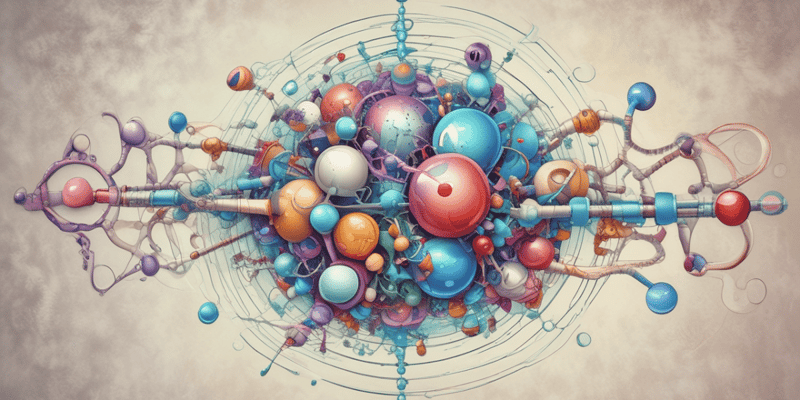10 Questions
What is the primary way in which drugs exert their effects on the body?
Through binding to specific receptors
How do drug-receptor interactions affect cell behavior?
By inhibiting receptor function
What type of relationship does the dose-response relationship chart?
The effect of the drug on the body as a function of its administered dose
Which term describes molecules that bind to receptors and activate them?
Agonists
What branch of pharmacology explores how drugs interact with the body at a cellular level?
Pharmacodynamics
What is the main difference between an agonist and an antagonist?
Agonists activate receptors, while antagonists prevent receptor activation.
How are competitive antagonists different from non-competitive antagonists?
Competitive antagonists block the receptor only in the presence of other drugs, while non-competitive antagonists block the receptor regardless of other drugs.
How does pharmacokinetics influence a drug's efficacy and safety?
Pharmacokinetics influences a drug's concentration and duration of action in the body.
What is the relationship described by a bell-shaped curve in dose-response relationships?
Low doses often produce therapeutic effects.
Why is understanding drug-receptor interactions crucial for drug development?
It assists in determining the optimal dosing regimen for patients.
Study Notes
Pharmacodynamics: Understanding Drug Action
Pharmacodynamics, often abbreviated as PD, is a branch of pharmacology that explores how drugs interact with the body, specifically, how they affect the function and activity of cells, tissues, and organs. In simpler terms, it investigates how drugs work and what they do to the body. This article will dive into four essential subtopics of pharmacodynamics: drug-receptor interactions, dose-response relationships, agonists and antagonists, and pharmacokinetics, which are interconnected in understanding drug action.
Drug-Receptor Interactions
Drugs exert their effects primarily through interactions with specific receptors, which are proteins found on cell surfaces or within cells. These receptors are usually proteins that recognize and bind to specific molecules (ligands) to initiate a response. When a drug molecule binds to a receptor, it can either activate or inhibit the receptor's function, leading to a change in cell behavior. These receptor-drug interactions are generally reversible and specific, meaning that each drug molecule has a particular receptor it can bind to.
Dose-Response Relationships
The dose-response relationship charts the effects of a drug on the body as a function of its administered dose. This relationship is generally described as a bell-shaped curve, with low doses often having little or no effect, moderate doses producing the desired therapeutic effect, and high doses potentially leading to adverse effects or toxicity. The exact shape and position of the dose-response curve are influenced by numerous factors, including the potency (efficacy) and selectivity of the drug, as well as the individual's physiological characteristics.
Agonists and Antagonists
Agonists and antagonists are two main classes of drugs that interact with receptors and affect the body. An agonist is a drug that binds to a receptor and activates it, leading to a response or effect. In contrast, an antagonist is a drug that binds to a receptor and prevents the receptor from being activated by its natural ligand or another drug. Antagonists can be competitive, meaning that they only block the receptor when the natural ligand or another agonist is present, or they can be non-competitive, blocking the receptor even if no other drugs are present.
Pharmacokinetics
Pharmacokinetics (PK) is the study of how the body absorbs, distributes, metabolizes, and excretes drugs. This information is crucial because it helps determine the drug's concentration and duration of action in the body, which in turn influences the drug's efficacy and safety. Pharmacokinetics provides valuable data that help predict drug-drug interactions, determine the optimal dosing regimen, and monitor drug therapy in patients.
In summary, pharmacodynamics plays a vital role in describing how drugs interact with the body to produce beneficial or adverse effects. Understanding drug-receptor interactions, dose-response relationships, agonists and antagonists, and pharmacokinetics provides the foundation for the rational development, selection, and optimization of drugs for therapeutic use.
Test your knowledge on pharmacodynamics, the branch of pharmacology that studies how drugs interact with the body to produce effects. Explore key topics such as drug-receptor interactions, dose-response relationships, agonists and antagonists, and pharmacokinetics.
Make Your Own Quizzes and Flashcards
Convert your notes into interactive study material.




